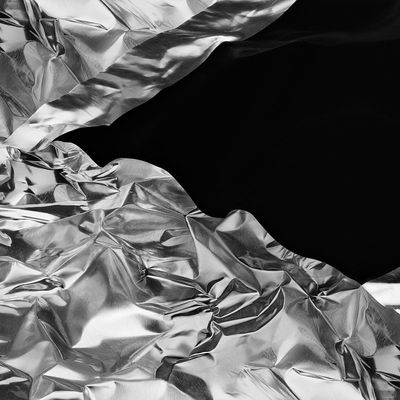
Exclusives have always been part of the art hustle. Tudor court painter Hans Holbein the Younger had a lock on portraying the infant Edward, Prince of Wales. In Madrid a few decades later, Diego Velázquez was the only artist permitted to paint King Philip IV. More recently, Jeff Koons tried to designate the artistic representation of balloon dogs as his intellectual property, to no avail.
Monopolizing a color, though, would be the ultimate power move. Pigments prized for their rarity, and priced out of reach of most painters, have included Tyrian purple, made from the milked secretions of a predatory sea snail; ultra­marine, based on the meta­morphic rock lapis lazuli, mined in places like northeastern Afghanistan; and mummy brown, an emulsion of ground-up embalmed corpses. In 1954, the French artist Yves Klein formulated a paint he named International Klein Blue but was unable to patent it.
And so a small furor erupted in the art world when, in February, the internet discovered that Anish Kapoor, the sculptor known for giant monochromatic public works such as the bean-shaped Cloud Gate in Chicago and the giant concave polished-steel Sky Mirror, had been granted the exclusive right to use Vanta­black, the blackest black in the history of blackness.
The fantasy of the ultimate black has haunted artists through the ages. (ÔÇ£If I could find anything blacker than black, IÔÇÖd use it,ÔÇØ the painter J.M.W. Turner once said about his rendering of a steamerÔÇÖs sails.) Vantablack was developed in 2013 by Surrey NanoSystems, a company in southern England that was focused on making materials for satellite imaging and basically stumbled into developing consummate blackness. It is not an abstract color but rather a proprietary substance that can be applied to a surface. Its creators describe Vantablack as a forest of carbon nanotubes: Light enters but virtually none of it escapes; 99.965 percent is absorbed. This is .01 percent more absorption than the previous record-holder, and itÔÇÖs a remarkable thing to behold. Crumpled tinfoil coated with Vantablack appears completely flat, if not surfaceless. Three dimensions collapse into two.
When word of Vantablack got out, Surrey NanoSystems was inundated by requests from artists. The company decided to work with just one ÔÇö Kapoor, who not only is British (useful, since there are export controls on the material) but also has long played around with perceptions of space and form. Among his effects are voids that look flat. With Vantablack, theoretically, he could turn this on its head, making a flat surface look like a void. Kapoor has hinted at a possible use for it: ÔÇ£Imagine walking into a room where you literally have no sense of the walls,ÔÇØ he told Artforum.
Kapoor may be the only artist to have gotten his hands on Vanta┬¡black, but Surrey NanoSystems is now making deals with watchmakers and other producers of luxury goods. It will be marketed to ÔÇ£the guys that have everything and want one of the rarest things on the planet,ÔÇØ says Ben Jensen, the companyÔÇÖs chief technology officer. ÔÇ£EveryoneÔÇÖs done diamonds and blingy stuff to death. But people get quite emotional about the color black. This isnÔÇÖt a color but a complete absence of something. ThereÔÇÖs nowhere on the planet you can go and experience a complete absence of light in an area with light.ÔÇØ Last month, the company refined a version of Vantablack that is blacker still. ItÔÇÖs so dark, Jensen says, that the precise degree of light absorption canÔÇÖt even be measured.
*This article appears in the April 18, 2016 issue of New York Magazine.

